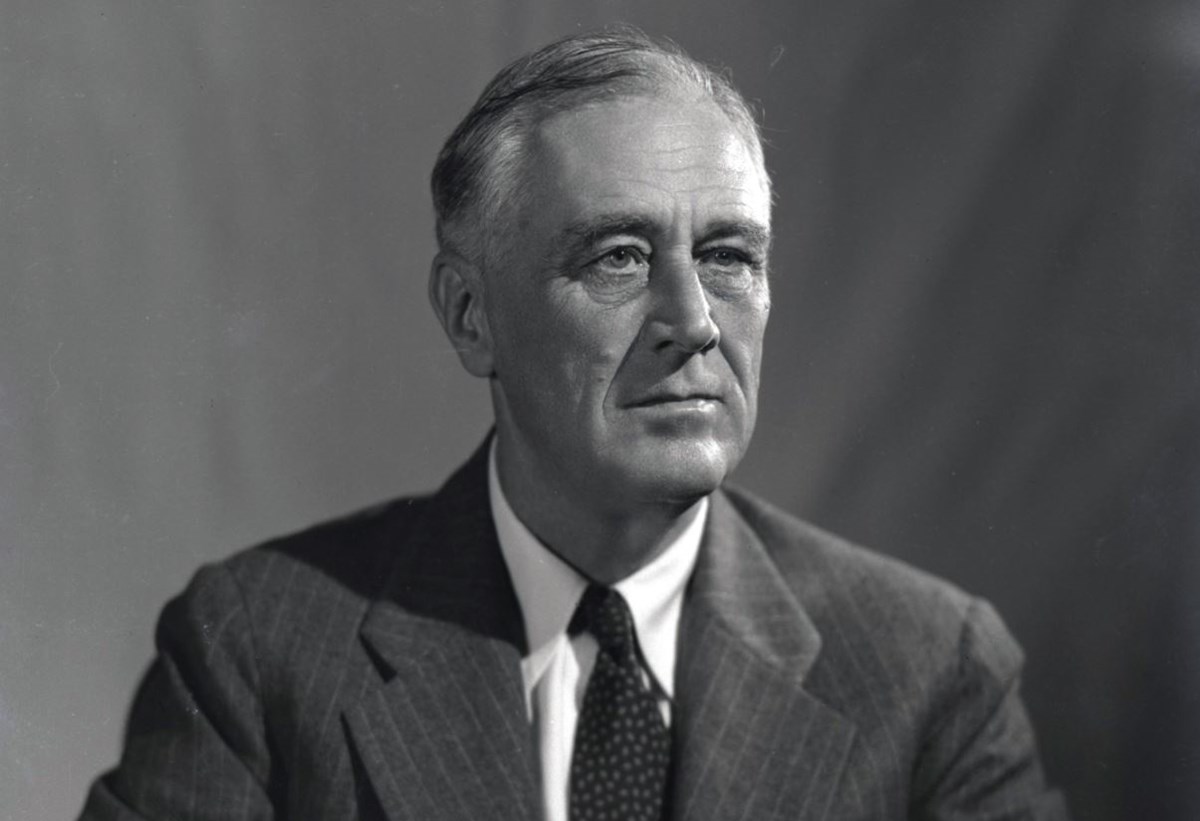On December 7, 1941, the Japanese navy attacked the U.S. fleet at Pearl Harbor. The following day, President Roosevelt described it as “a date that will live in infamy.” In spite of this country’s official neutrality, Roosevelt personally had been eager to have the United States enter the war on the side of England. He had persuaded Congress to assist England with money, food, munitions, planes, ships, and Lend Lease, and by patrolling and convoying British ships in the Atlantic. These measures were intended, Roosevelt assured the people, not to take us into war, but to keep us out. Japan’s attack, while we were still formally at peace and negotiating to settle various disputes, gave Roosevelt the excuse he wanted to ask Congress for a declaration of war.
When the President announced that the fleet had been attacked “suddenly and deliberately” by Japan, people believed him. Only after the war did the people discover that FDR’s administration and top military officials had not been as surprised as they were: the U.S. government had been privy to many of Japan’s intentions since mid-1940 when intelligence officers deciphered her top diplomatic code. Washington officialdom had been expecting aggressive Japanese action somewhere in the Pacific. Whether or not they were expecting the Pearl Harbor attack is another question.
For years rumors have circulated to the effect that Roosevelt knew that Japan planned to attack Pearl Harbor—and just let it happen. By far the most detailed and credible claim to date is contained in Robert Stinnett’s book Day of Deceit: The Truth About FDR and Pearl Harbor. Stinnett is a Navy veteran of World War II who spent his life as a newspaper journalist and photographer. He argues that ample evidence was available to U.S. administration and military officials—through Japanese intercepts decoded and translated before the attack—to indicate that Japan was planning to attack Pearl Harbor. The Pearl Harbor commanders, Admiral Husband E. Kimmel and General Walter C. Short, would not have been surprised if they had been properly informed. Washington, however, chose to keep them in the dark.
Stinnett describes what appear to be three “conspiracies”: the first to compel the Japanese to attack the United States and thus to bring us into World War II; the second to deprive the Pearl Harbor commanders of available information about Japan’s intentions; and the third an attempt, which still persists, to keep pre-attack information from the public.
The first “conspiracy” began, Stinnett says, in October 1940, with a memorandum by Japanese expert Captain Arthur McCollum, chief of the Far Eastern Section of Naval Intelligence. The memorandum listed eight steps to induce Japan “to commit an overt act of war.” First, the main strength of the U.S. fleet should be retained in Hawaii. This Roosevelt promptly arranged, over the objections of James Richardson, commander-in-chief of the U.S. fleet. Over the following year, McCollum’s other suggestions were also adopted.
According to Stinnett, U.S. cryptographers had deciphered not only Japan’s diplomatic code known as MAGIC, but also some of her military codes, enabling operators in U.S. monitoring stations around the Pacific to intercept and decode countless Japanese military dispatches. Significant information was received from these intercepts, Stinnett says, including the Japanese Task Force’s last-minute choice for its staging area, its destination, and its attack order. But that intelligence was purposively withheld from the Pearl Harbor commanders.
On November 23, Kimmel, as the Fleet’s Commander in Chief, had ordered, without White House approval, a search for Japanese forces north of Hawaii and had moved the Pacific fleet into the North Pacific. When White House officials learned of this and feared the fleet might encounter the Japanese attack convoy, Kimmel’s ships were ordered back to Pearl Harbor. Also on November 25, the Navy in Washington told Kimmel to route all transpacific shipping southward leaving the north Pacific “vacant” and thus, according to Stinnett, open for the approach of the Japanese convoy.
Judging by the words and actions of Roosevelt and his advisers it is hard to believe that they were as sure as Stinnett indicates they were that the Japanese attack on Pearl Harbor, which they wanted, was imminent. For instance, at a meeting of Roosevelt’s “War Cabinet” on November 25, Secretary of War Henry Stimson remarked that “the Japanese are notorious for making an attack without warning, and the question was . . . how we should maneuver them into the position of firing the first shot without allowing too much danger to ourselves.”
Even though Stinnett’s case does not seem to me entirely convincing, he has certainly assembled a great deal of information previously unavailable. His book makes fascinating reading for anyone interested in the events leading up to the Japanese attack and the administration’s subsequent attempts to deny responsibility and pin the blame on the commanders, who were not only deprived of vital military intelligence, but also were impeded in their efforts to gather it themselves.


